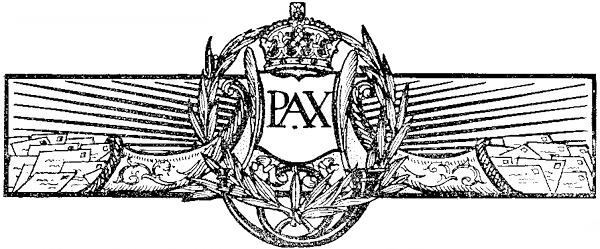Roman History > Roman Provincias
Roman Provincias

Background
The Roman provinces were administrative divisions of the Roman Empire, each governed by a governor appointed by the Roman Senate or the emperor. These provinces played a crucial role in the organization and governance of the vast Roman territories, providing a framework for the administration, taxation, defense, and economic exploitation of the empire. Here's an overview of the Roman provinces:
Creation and Organization:
The Roman provinces were initially established during the Republican period, but their number and boundaries evolved over time. Provinces were typically created through military conquest, treaties, or administrative reorganization. Provinces were classified into two main categories: senatorial provinces and imperial provinces. Senatorial provinces were governed by proconsuls appointed by the Senate, while imperial provinces were governed by governors appointed directly by the emperor. Provinces were further subdivided into smaller administrative units, such as regions, districts, and municipalities, each with its own local government and officials.
Geographical Distribution:
The Roman provinces encompassed territories across Europe, Asia, and Africa, extending from Britain in the northwest to Egypt in the southeast. They included diverse geographical regions, such as islands, peninsulas, plains, mountains, and coastlines. Provinces were strategically located along major trade routes, natural resources, and frontiers, allowing the Roman Empire to control and exploit valuable territories for economic, military, and political purposes.
Administration and Governance:
Each province was governed by a governor, known as a proconsul or a propraetor, who held both military and civilian authority. Governors were responsible for enforcing Roman law, collecting taxes, maintaining public order, and representing Roman interests in their respective provinces.Provincial administration was supported by a bureaucracy of officials, including quaestors, procurators, and local magistrates, who assisted in the day-to-day governance of the provinces. The Roman legal system, based on Roman law, was implemented in the provinces, although local customs and legal traditions were often allowed to coexist with Roman law.
Economy and Resources:
The provinces contributed significantly to the economic prosperity of the Roman Empire, providing vital resources such as grain, metals, timber, and slaves. Provinces with fertile agricultural land or valuable mineral deposits were particularly important for sustaining the empire's economy.Trade and commerce flourished within and between the provinces, facilitated by a network of roads, ports, and sea routes constructed by the Romans. Provinces served as centers of production, distribution, and consumption of goods and services.
Culture and Society:
The provinces were ethnically and culturally diverse, with populations consisting of Roman citizens, indigenous peoples, immigrants, and slaves. Romanization, the spread of Roman language, culture, and institutions, gradually transformed the societies and cultures of the provinces. Local cultures and traditions often coexisted with Roman customs, resulting in a rich tapestry of languages, religions, art, and architecture across the provinces. The Romanization process varied in intensity and extent from province to province, depending on factors such as proximity to Rome, duration of Roman rule, and indigenous resistance.
Legacy and Decline:
The Roman provinces played a central role in the expansion, consolidation, and eventual decline of the Roman Empire. They served as the administrative, economic, and cultural backbone of the empire, sustaining its growth and prosperity for centuries. However, the provinces also faced challenges such as internal unrest, external invasions, economic decline, and administrative corruption, which contributed to the eventual fragmentation and collapse of the Western Roman Empire in the 5th century CE. Despite the decline of the Roman Empire, the legacy of the Roman provinces endured in the form of language, law, religion, architecture, and cultural traditions, which continue to influence modern societies in Europe, Asia, and Africa.
Roman Provincias
Roman Provincias List
- Provincia Achaea
- Provincia Aegypti
- Provincia Africa Proconsularis
- Provincia Cottiae
- Provincia Maritimae
- Provincia Alpes Poeninae
- Provincia Arabia Petraea
- Provincia Armenia
- Provincia Asia
- Provincia Assyria
- Provincia Augustamnica
- Provincia Bithynia et Pontus
- Provincia Britannia Inferior
- Provincia Britannia Superior
- Provincia Britannia
- Provincia Byzacena
- Provincia Cappadocia
- Provincia Cilicia
- Provincia Corsica et Sardinia
- Provincia Crete et Cyrenaica
- Provincia Cyprus
- Provincia Dacia Aureliana
- Provincia Dacia
- Provincia Dalmatia
- Provincia Galatia
- Provincia Gallia Aquitania
- Provincia Gallia Belgica
- Provincia Gallia Lugdunensis
- Provincia Gallia Narbonensis
- Provincia Germania
- Provincia Germania Inferior
- Provincia Germania Superior
- Provincia Hispania
- Provincia Hispania Baetica
- Provincia Hispania Citerior
- Provincia Hispania Lusitania
- Provincia Hispania Tarraconensis
- Provincia Hispania Ulterior
- Provincia Iudaea
- Provincia Lycia et Pamphylia
- Provincia Macedoniae
- Provincia Mauretania
- Provincia Mauretania Caesariensis
- Provincia Mauretania Tingitana
- Provincia Mesopotamia
- Provincia Moesia
- Provincia Moesia Inferior
- Provincia Moesia Superior
- Provincia Pannonia
- Provincia Pannonia Inferior
- Provincia Pannonia Superior
- Provincia Pannonia Valeria
- Provincia Raetia
- Provincia Sicilia
- Provincia Sophene
- Provincia Syria
- Provincia Syria Palaestina
- Provincia Syria Phoenice
- Provincia Thracia